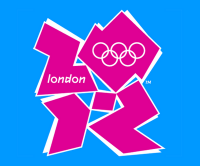With the arrival of a new year, it’s a perfect moment to reflect on the major trends and developments that made a mark in our world in 2015. Several compelling brand stories made headlines, some for their creativity and others for the controversy they inspired. Here are the top 5 brand stories that caught our attention:
- Google – Surprising many tech industry watchers, Google announced the rollout of a brand new logo in September 2015. The simplified sans serif typeface lent the logo a fresher feel as well as more flexibility. The updated logo also synchronized well with the branding for Alphabet, Google’s new holding company.
- The New School – This highly regarded New York educational institution also underwent a rebranding initiative, taking risks with an unconventional design that stands apart from the pack. Expectations were likely high since The New School is a design school; the new imagery received accolades and criticisms alike.
- Hillary Clinton – The Democratic Presidential candidate’s iconic H logo with the red arrow was the subject
of heated debate, with reception initially critical and then turning more positive. Some observers later remarked on its inherent flexibility and adaptability, which will no doubt become assets as the 2016 election season heats up.
- Shake Shack – Having started life as a hugely popular burger stand in Manhattan’s Madison Square Park, Shake Shack has rapidly expanded into a $1.6 billion global brand. The distinctive logo, signage, and bags were all originally designed pro bono for the original location, but, in a turn of events that no one would have expected, they have now become the face of an increasingly influential international property.
- Volkswagen – 2015 was a tough year for Volkswagen. The German auto giant was accused of cheating emissions tests on its diesel cars sold in the U.S., which had been specifically marketed as featuring low emissions. Volkswagen has begun rebranding in the wake of the resulting scandal, recently dropping its famous “Das Auto” slogan from its upcoming marketing campaigns.
What brand stories captivated you in 2015? Feel free to share your thoughts and reflections in the comments section below. As we welcome 2016, best wishes for a healthy and prosperous New Year!
Looking to start your New Year right with custom branded promotional products that can make a difference for your brand? We’d be happy to share some recommendations and creative ideas with you. Connect with us on Twitter and Facebook or call us at 877-881-6845 and we’ll be glad to advise you on branding ideas that can represent your company with style and grace.



 Safe: Safe and sound. Safety in numbers. Failsafe. Safe sex. We may have different images of how safe looks, but we can probably all agree that at the most fundamental level, being safe is being free from harm or risk or the threat of danger.
Safe: Safe and sound. Safety in numbers. Failsafe. Safe sex. We may have different images of how safe looks, but we can probably all agree that at the most fundamental level, being safe is being free from harm or risk or the threat of danger.








